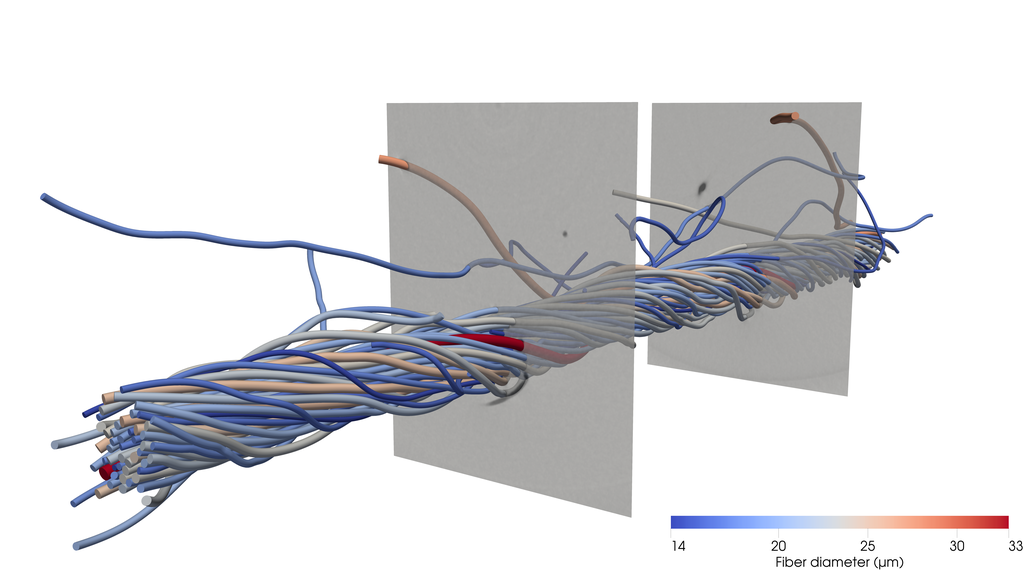Doelstelling:
In this thesis, you will develop and validate a structural model of a fine staple fiber yarn made from wool fibres (+/- 30 tex). A high-fidelity geometrical model, built from microcomputed tomography (µCT), will be provided, see Figure 1. This geometrical model has already been used to simulate a tensile test, however the selected material properties are far too simplified (e.g. elastic-plastic material definition instead of nonlinear visco-elastic) to be used in more general frameworks. During your thesis, you explore more realistic material definitions, but also consider other loading cases and perhaps even generate new fiber models based on new µCT scans.
Additionally, established methods to determine the yarn’s bending rigidity, i.e. the Peirce cantilever test (ASTM D1388) lead to inaccurate results. In a second part of the thesis, you will develop a methodology to determine the yarn’s bending stiffness, both numerically and experimentally. A possible approach here could be to determine the natural frequencies of the yarn under a certain pre-tension, similar to e.g. piano strings.

Figure 1: High-fidelity geometrical yarn model (sample length: 4.5 mm).